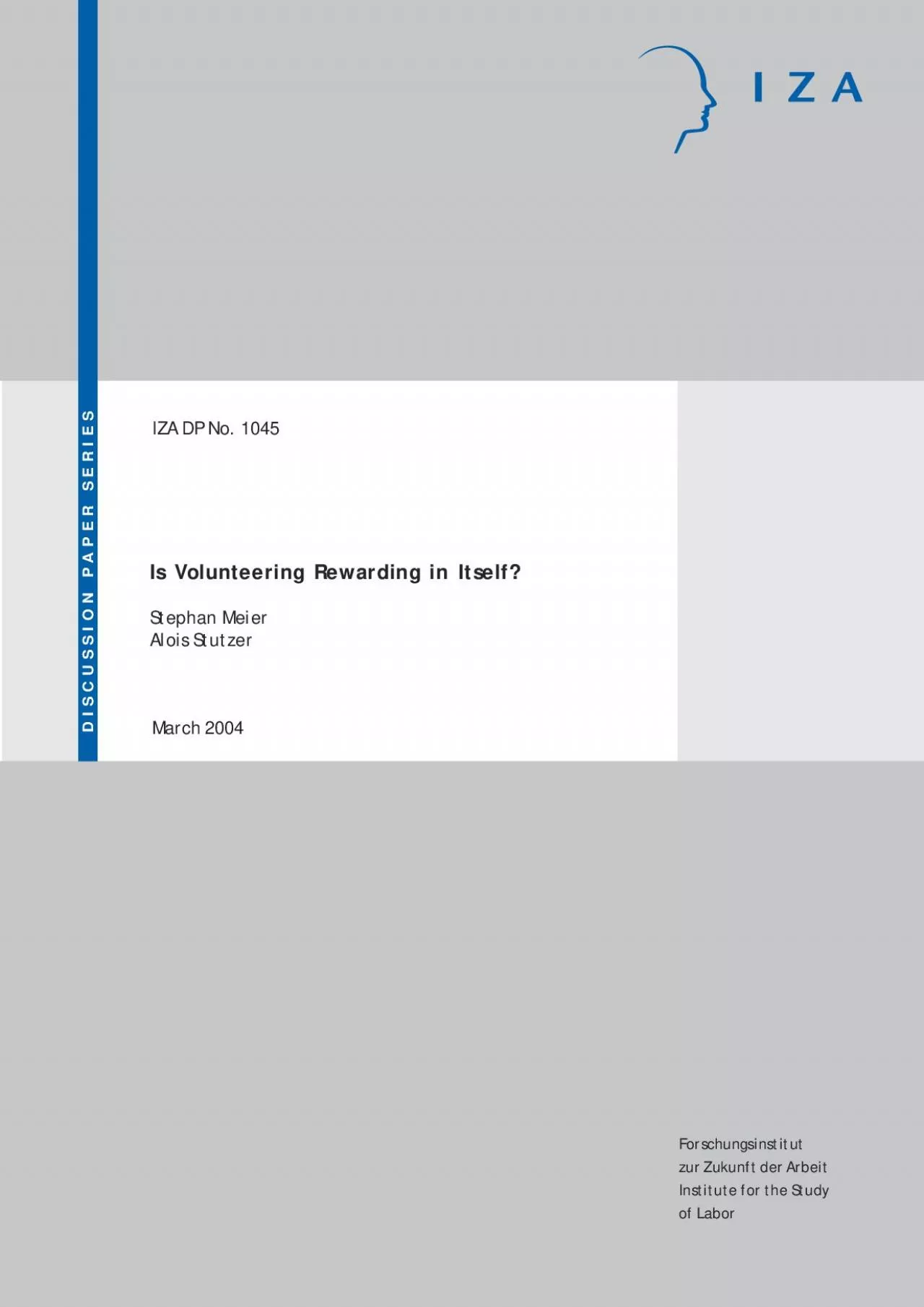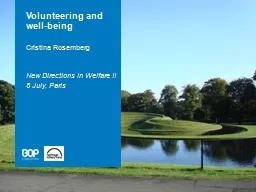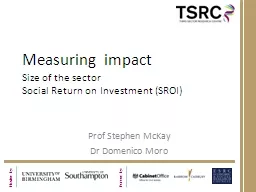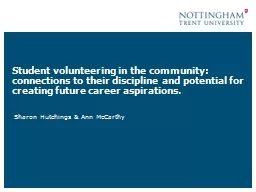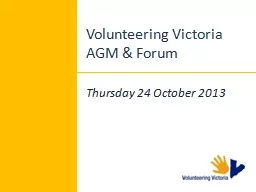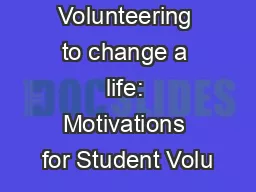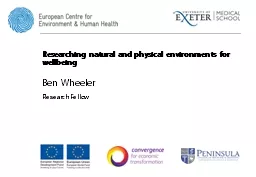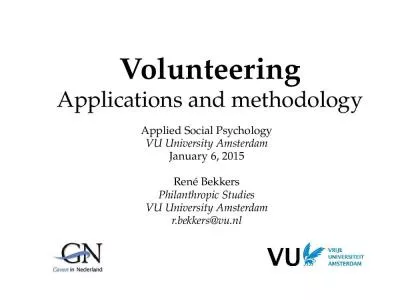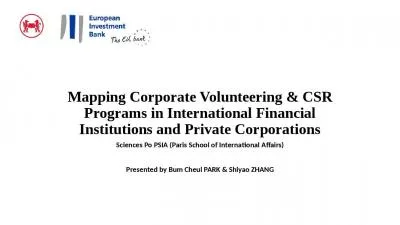PDF-Is Volunteering Rewarding in Itself
Author : obrien | Published Date : 2021-10-02
Stephan Meier University of Zurich Alois Stutzer University of Zurich and IZA Bonn Discussion Paper No 1045 March 2004 IZA PO Box 7240 53072 Bonn Germany Phone 4922838940
Presentation Embed Code
Download Presentation
Download Presentation The PPT/PDF document "Is Volunteering Rewarding in Itself" is the property of its rightful owner. Permission is granted to download and print the materials on this website for personal, non-commercial use only, and to display it on your personal computer provided you do not modify the materials and that you retain all copyright notices contained in the materials. By downloading content from our website, you accept the terms of this agreement.
Is Volunteering Rewarding in Itself: Transcript
Download Rules Of Document
"Is Volunteering Rewarding in Itself"The content belongs to its owner. You may download and print it for personal use, without modification, and keep all copyright notices. By downloading, you agree to these terms.
Related Documents

